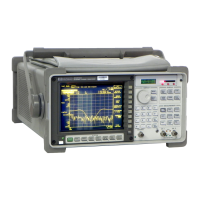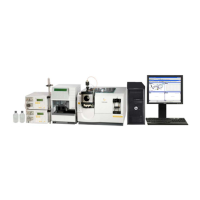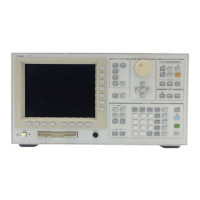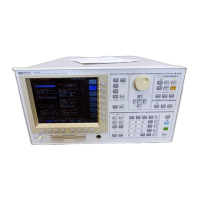To prepare for filling the capture buffer
Preparing to fill the time-capture buffer is very similar to preparing for any other
measurement: You must complete all your connections between the analyzer and your
device-under-test (DUT), and you must specify most parameters grouped under the
MEASUREMENT hardkeys. However, you must not rely on autoranging to maintain
the proper range for your input channels. The analyzer does not autorange while it is
filling the buffer.
1 Initialize the analyzer and connect your test signals (as described in other
measurement tasks), just as you would if you were not capturing data.
2 Manually set each channel’s range to slightly exceed the highest signal level you
anticipate.
Press [
Input
] then press [
CHANNEL 1 2
] (or [
CHANNEL 1 2 3 4
]) to select the channel
whose range you will set.
Press [
CHANNEL x RANGE
] <number> [
ENTER
].
Repeat this step for each active channel.
3 Specify the other [
Input
] parameters, and the parameters grouped under [
Freq
]and
[
Source
], just as you would if you were not capturing data.
4 If you will require tachometer data when you measure from the buffer (as you will
when you measure using the order instrument mode or rpm-step arming), press [
Input
]
[
TACHOMETR SETUP
], then specify the tachometer parameters.
5 If you will require tachometer data when you measure from the buffer, but you are not
using the order instrument mode to fill the buffer, enable the collection of tachometer
data.
Press [
Inst Mode
][
TIME CAPTURE
][
TACHOMETR OPTIONS
], then press
[
TACH DATA ON OFF
] to highlight ON.
Press [
MAX RPM
]<number>[
ENTER
] to specify the highest rotation speed you will
monitor when you measure from the buffer.
Agilent 35670A
Using Time Capture Operator's Guide
7-2

